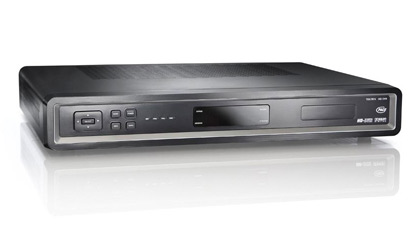Your TV set-top box might cost you more on your energy bills than your refrigerator

There's been a big stink made about the power-hogging ways of HDTVs, but something else in the living room -- and something a whole lot smaller -- is probably costing more in electricity bills each month.
The humble HD set-top box uses about the same amount of power per year as a desktop computer, according to the Natural Resources Defense Council, but add DVR functionality to that device, and it suddenly sucks down more juice than a 21-cubic-foot refrigerator. It may not look like it's doing much, but a set-top box is on 24 hours a day, sipping electricity even when you turn it "off".
In fact, that standby power consumption is 66 percent of a set-top box's total draw. Combine the standby power usage of all set-top boxes in the U.S., and it totals as much power as the state of Maryland consumes in a year.
Why have the vampiric tendencies of these boxes previously avoided the scrutiny of other electronics in the campaign to go green? For one thing, there's limited consumer involvement in procuring a set-top box -- you just get one (or more) from your local cable company, which has purchased them in bulk. You can't just run out and buy the "green" version. The cable companies also say that they need the boxes to remain powered on to make updates to their services during the middle of the night, when they're least likely to impact viewing.
Finally, there's the issue of rebooting the device if it were in deep sleep mode. According to a front page article in Sunday's New York Times, British company Pace sells a set-top box to pay TV providers with a deep sleep mode that slashes power usage to just 5 percent of what the unit consumers when active. The only problem: It takes up to two minutes to reboot once powered on again. Needless to say, U.S. cable companies don't enable that mode, but in Europe, where electricity costs significantly more, consumers don't complain about the lack of instant access like American viewers would.
Energy Star is attempting to create some more stringent guidelines for set-top boxes, though earning its seal of approval is voluntary, and since subscribers are at the whim of their provider's technology, it won't make the same impact as a buyer seeing an Energy Star logo on a TV or an appliance that can be purchased at a store.
Other set-top box manufacturers tell the New York Times that there's no pressure from consumers for more energy efficient boxes. So expect to continue paying an additional $10 or so per month for your cable service -- it will just show up on your electric bill.
